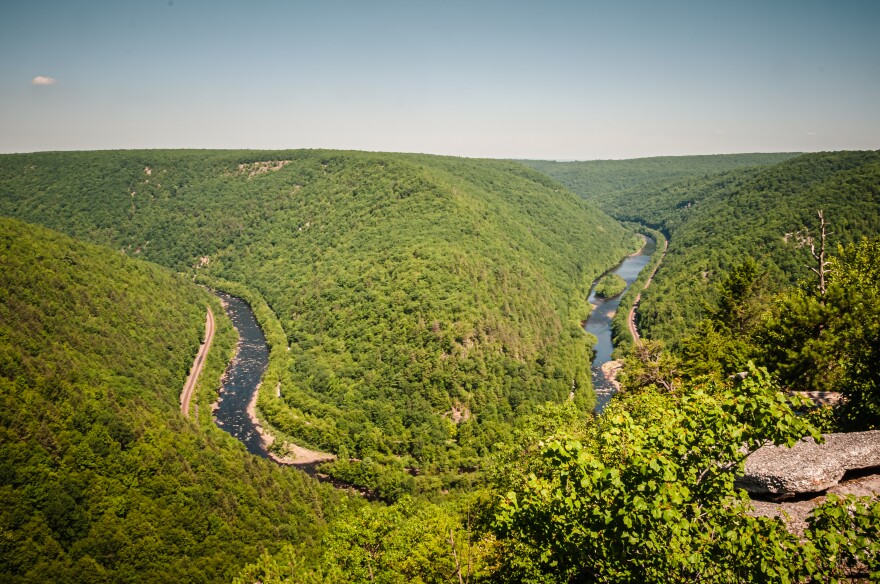WASHINGTON — The Lehigh River is included in a new list of endangered rivers in the United States released Tuesday, which says it's threatened by “poorly planned development” of warehouses and distribution centers.
- The Lehigh River was included in a list of America's Most Endangered Rivers
- The environmentalist group that compiles the list blames the region's warehouses and distribution centers
- The river recently was ranked for industrial facilities dumping toxins into waterways
"The Lehigh is the backyard river for half a million people, and the keystone to northeastern Pennsylvania's outdoor recreation industry,” said Lia Mastropolo, director of clean water supply at American Rivers, a national nonprofit focused on clean water and river health.
“But unprecedented development of open space for warehousing and distribution centers now threatens the region’s clean water and wildlife, and the communities and economies that rely on them.”
"The Lehigh is the backyard river for half a million people, and the keystone to northeastern Pennsylvania's outdoor recreation industry. But unprecedented development of open space for warehousing and distribution centers now threatens the region’s clean water and wildlife, and the communities and economies that rely on them."Lia Mastropolo, director of clean water supply at American Rivers
It is the first time the Lehigh River, a 109-mile-long tributary of the Delaware River that flows through most of the Lehigh Valley, was included in American Rivers’ annual list, “America’s Most Endangered Rivers.”
The Lehigh is a source of drinking water for hundreds of thousands of residents.
At risk, and it's growing
Environmentalists point to warehouses and distribution centers as the cause of putting “the river’s health at risk.”
“Unless federal, state and local decision makers act to improve protections for local waterways, the area’s clean water and wildlife habitat could suffer irreversible harm,” according to the report.
“This poorly planned development threatens the Lehigh River by converting critical forest and wetlands to hard surfaces—roofs and parking lots.” according to a news release announcing the list.A written statement from American Rivers
At risk, officials say, are clean water, fish and wildlife habitat, rural and local communities, as well as open space.
Distribution centers already cover more than four square miles of land within the watershed, according to the report, and there’s more coming.
“This poorly planned development threatens the Lehigh River by converting critical forest and wetlands to hard surfaces—roofs and parking lots,” according to a news release announcing the list.
“These impervious surfaces prevent rainwater from soaking into the ground. Instead, warm, salty, dirty water runs off the pavement directly into the river and its tributaries.
“This flooding and pollution, and the paving of the remaining open space in the urban stretches in the Lehigh Valley, disproportionately impact downstream communities that have already borne the brunt of environmental degradation and climate change.”
Lehigh Valley Rivers by LVNewsdotcom on Scribd
The region is expected to grow substantially over the next few decades, with officials estimating the Valley could add nearly 100,000 people in the next 30 years.
During November’s Annual Lehigh Valley Outlook and Awards Banquet, there was great emphasis placed on how local leaders will need to work to preserve farmland, control development, improve the road systems and increase capacity in schools.
Watershed already in crisis
Researchers already have shown a crisis in the watershed, focusing on toxic chemical pollution.
PennEnvironment’s national organization, Environment America, in September released “Wasting our Waterways,” a report focused on industrial facilities dumping toxins into waterways across the country.
It used data from the U.S. Environmental Protection Agency’s 2020 Toxics Release Inventory.
The Lehigh River watershed ranked second in the country for most reproductive toxic releases, according to the report.
It ranked 13th of the Top 50 watersheds by toxicity-weighted releases and 30th out of the Top 50 local watersheds by total cancer-causing chemicals released.
"Distribution centers, in their scale and speed paving over land in the Lehigh River watershed, are permanently altering how the water flows across the landscape."Donna Kohut of nonprofit Citizens for Pennsylvania’s Future
"Distribution centers, in their scale and speed paving over land in the Lehigh River watershed, are permanently altering how the water flows across the landscape,” said Donna Kohut of nonprofit Citizens for Pennsylvania’s Future.
“By recognizing how these land use changes endanger the Lehigh — a river that has long suffered from harmful industry impacts — we can focus on prioritizing solutions to protect it from further degradation.
“We must educate local municipalities and residents about the impacts and pass statewide legislation to ensure these waterways have forested riparian buffers that protect water quality and wildlife habitat.
"And we must protect what is already pristine so we can invest in the downstream waters that are increasingly impaired and degraded."
The Lehigh River’s name comes from the Lenape name for the river, Lechewuekink, which means "where there are forks.” With headwaters in the Poconos, the river flows south to its confluence with the Delaware River in Easton.


